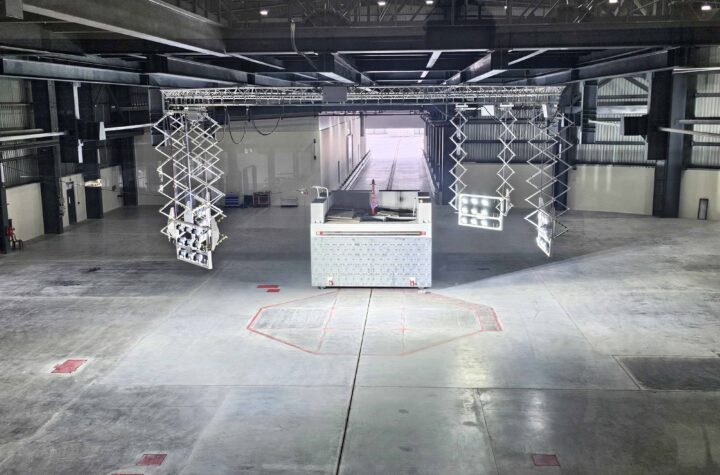
In the quest for sustainable and eco-friendly energy solutions, solar power has emerged as a frontrunner. Among various solar technologies, the monocrystalline solar panel stands out for its efficiency and effectiveness.
This article delves into the workings of these panels, their advantages, and how they are revolutionizing energy usage, particularly in modern applications like the BougeRV CR fridge.
Understanding Monocrystalline Solar Panels
Monocrystalline solar panels are made from a single, continuous crystal structure. They are easily identifiable by their uniform dark look and rounded edges. These panels are manufactured from silicon, which is one of the most abundant elements on earth. The process of creating a monocrystalline panel involves cutting a silicon ingot grown from a single, pure silicon crystal. This method ensures high purity and, consequently, high efficiency.
Advantages of Monocrystalline Panels
The foremost advantage of a monocrystalline solar panel is its high efficiency. They typically have an efficiency rating of 15-20%, which is higher than their polycrystalline counterparts. This means they can convert more sunlight into electricity using the same amount of space. Other benefits include:
- Longevity: Monocrystalline panels are known for their durability and have a lifespan of up to 25 years or more.
- Performance in Low Light: These panels perform better in low-light conditions compared to other types of solar panels.
- Space Efficiency: Due to their high efficiency, fewer panels are required to generate the same amount of power, making them ideal for space-constrained applications.
Monocrystalline Panels in Modern Energy Solutions
The application of monocrystalline solar panels is vast and varied. They are used in residential and commercial solar installations, in solar farms, and even in smaller devices and portable solar products.
The integration of monocrystalline solar panels into modern energy solutions marks a significant advancement in the quest for sustainable and efficient energy utilization. These panels, known for their high efficiency and sleek design, are increasingly becoming the cornerstone of various energy systems, from residential setups to innovative, portable applications.
-
Residential and Commercial Solar Installations
In residential and commercial sectors, monocrystalline panels are a popular choice due to their efficiency and space-saving attributes. These panels can generate more electricity per square foot than other types, making them ideal for rooftops where space is limited. In urban areas, where building aesthetics are also a consideration, the sleek appearance of monocrystalline panels blends seamlessly with modern architecture. They are particularly beneficial in regions with high electricity rates or where government incentives are available for solar installations, making them a cost-effective solution over time.
-
Large Scale Solar Farms
Monocrystalline panels are not just confined to small-scale installations; they play a crucial role in large solar farms. These farms, often located in remote areas, require panels that can withstand various environmental conditions while maintaining high efficiency. The durability and long lifespan of monocrystalline panels make them a preferred choice for these large-scale projects. They contribute significantly to grid stability and provide a renewable source of energy that can reduce reliance on fossil fuels.
Case Study: The BougeRV CR Fridge
A prime example of monocrystalline solar panels’ application in modern technology is in powering devices like the BougeRV cr fridge. This portable fridge, ideal for outdoor activities like camping, relies on solar power for its operation. The efficiency of monocrystalline panels makes them perfect for such applications where reliable and consistent power is needed in remote locations. The BougeRV cr fridge, when powered by these panels, becomes an eco-friendly option, reducing reliance on traditional power sources and minimizing the carbon footprint.
Challenges and Future Prospects
Despite their advantages, monocrystalline panels have some challenges. The initial cost of these panels is higher than other types, though this is often offset by their longer lifespan and higher efficiency. Additionally, the manufacturing process is more complex and energy-intensive.
Looking to the future, advancements in technology are expected to further increase the efficiency of monocrystalline panels. Innovations like bifacial solar panels and enhancements in anti-reflective coatings could lead to even greater power outputs.
Conclusion
Monocrystalline solar panels represent a significant step forward in harnessing the sun’s power. Their efficiency, longevity, and effectiveness make them a crucial component in the shift towards sustainable energy solutions. As seen with applications like the BougeRV cr fridge, these panels offer a glimpse into a future where renewable energy is seamlessly integrated into our daily lives, paving the way for a greener, cleaner planet.









More Stories
MESSRING completes new crash test facility for Mahindra in India
ROHM Develops an Ultra-Compact MOSFET Featuring Industry-Leading* Low ON-Resistance Ideal for Fast Charging Applications
More than 30 of the top 50 global suppliers have production facilities in Turkey